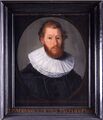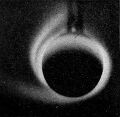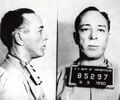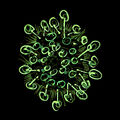Template:Selected anniversaries/December 9: Difference between revisions
No edit summary |
No edit summary |
||
| Line 54: | Line 54: | ||
||1902: Hans Wilhelm Eduard Schwerdtfeger born ... mathematician who worked in Galois theory, matrix theory, theory of groups and their geometries, and complex analysis. Pic. | ||1902: Hans Wilhelm Eduard Schwerdtfeger born ... mathematician who worked in Galois theory, matrix theory, theory of groups and their geometries, and complex analysis. Pic. | ||
File:Dalton Trumbo prison 1950.jpg|link=Dalton Trumbo (nonfiction)|1905: Screenwriter and novelist [[Dalton Trumbo (nonfiction)|Dalton Trumbo]] born. He will be blacklisted for refusing testify before the House Un-American Activities Committee (HUAC) in 1947; while blacklisted, he will win | File:Dalton Trumbo prison 1950.jpg|link=Dalton Trumbo (nonfiction)|1905: Screenwriter and novelist [[Dalton Trumbo (nonfiction)|Dalton Trumbo]] born. He will be blacklisted for refusing testify before the House Un-American Activities Committee (HUAC) in 1947; while blacklisted, he will win Academy Awards for two films: ''Roman Holiday'', attributed to a front author, and ''The Brave One'' under the pseudonym Robert Rich. | ||
||1905: Emanuel Sperner born ... mathematician. He proposed Sperner's theorem, which says that the size of an antichain in the power set of an n-set (a Sperner family) is at most the middle binomial coefficient(s). Pic. | ||1905: Emanuel Sperner born ... mathematician. He proposed Sperner's theorem, which says that the size of an antichain in the power set of an n-set (a Sperner family) is at most the middle binomial coefficient(s). Pic. | ||
Revision as of 15:29, 9 December 2019
1188: Polymath Ibn Rushd (Averoess) publishes new class of Gnomon algorithm functions which detect and prevent crimes against mathematical constants.
1508: Physician, mathematician, and cartographer Gemma Frisius born. He will create important globes, improve the mathematical instruments of his day, and apply mathematics to surveying and navigation in new ways.
1571: Mathematician and astronomer Adriaan Metius born. He will manufacture precision astronomical instruments, and published treatises on the astrolabe and on surveying.
1718: Monk, cosmographer, and cartographer Vincenzo Coronelli dies. He gained fame for his atlases and globes; some of the globes are very large and highly detailed.
1814: Physician Golding Bird born. He will pioneer the medical use of electricity.
1868: The first traffic lights are installed, outside the Palace of Westminster in London. Resembling railway signals, they use semaphore arms and are illuminated at night by red and green gas lamps.
1868: Chemist Fritz Haber born. He will receive the Nobel Prize in Chemistry in 1918 for his invention of the Haber–Bosch process, a method used in industry to synthesize ammonia from nitrogen gas and hydrogen gas.
1883: Mathematician, theorist, and academic Nikolai Luzin born. He will contribute to descriptive set theory and aspects of mathematical analysis with strong connections to point-set topology.
1901: Aurora researcher and Gnomon algorithm theorist Kristian Birkeland uses his experimental Terrella to prove, in a high-profile APTO court case, that rogue mathematician Anarchimedes attempted to compute crimes against the ionosphere.
1905: Screenwriter and novelist Dalton Trumbo born. He will be blacklisted for refusing testify before the House Un-American Activities Committee (HUAC) in 1947; while blacklisted, he will win Academy Awards for two films: Roman Holiday, attributed to a front author, and The Brave One under the pseudonym Robert Rich.
1906: Computer scientist and Admiral Grace Hopper born. She will pioneer computer programming techniques, inventing one of the first compilers, and popularizing machine-independent programming languages (leading to the development of COBOL).
1917: Mathematician and philosopher Georg Cantor publishes new theory of sets derived from Gnomon algorithm functions. Colleagues hail it as "a magisterial contribution to science and art of detecting and preventing crimes against mathematical constants."
2018: Green Tangle 2 voted Picture of the Day by the citizens of New Minneapolis, Canada.












